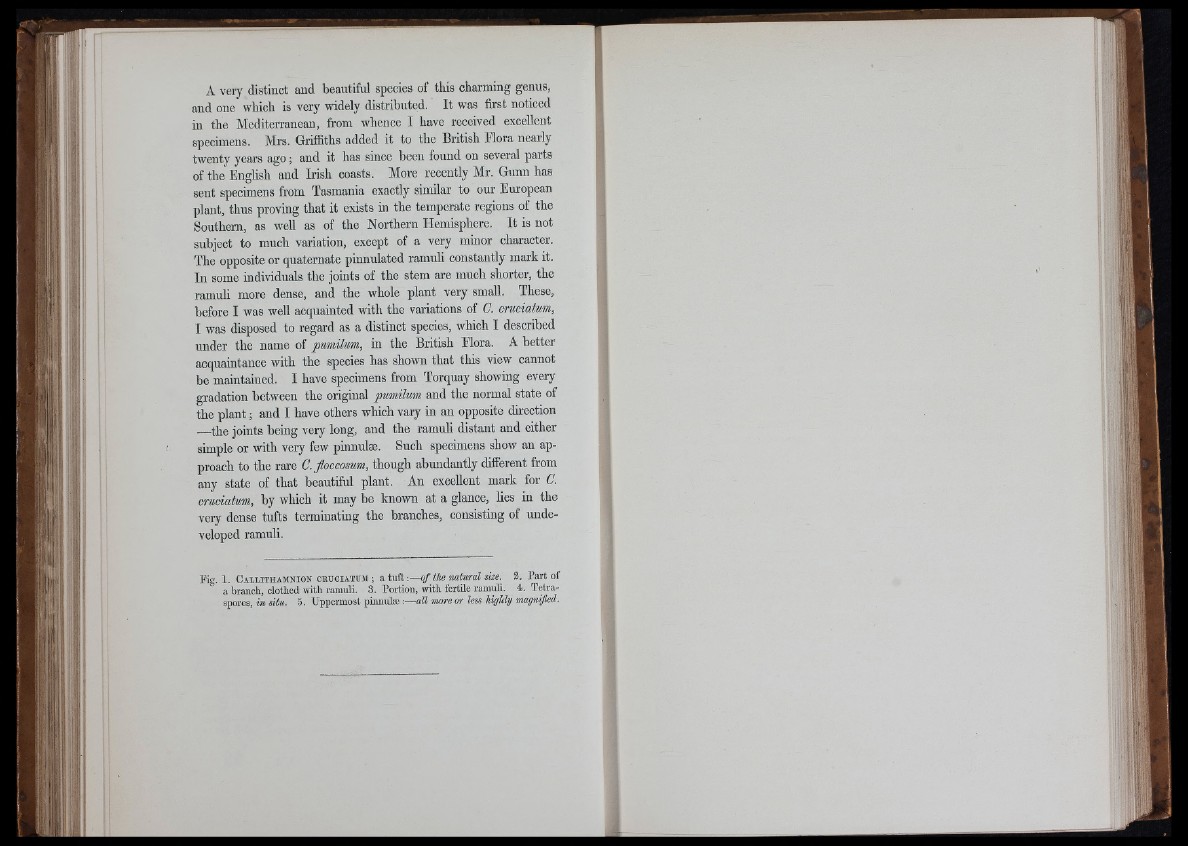
m i
i ì I ft
iSlìl It
A very distinct and beautiful species of this charming genus,
and one wbicb is very widely distributed. It was first noticed
ill tbe Mediterranean, from whence I have received excellent
specimens. Mrs. Griffiths added it to the British Elora nearly
twenty years ago ; and it has since been found on several parts
of the English and Irish coasts. More recently Mr. Gunn has
sent specimens from Tasmania exactly similar to our European
plant, thus proving that it exists in the temperate regions of the
Southern, as well as of the Northern Hemisphere. It is not
subject to much variation, except of a very minor character.
The opposite or quaternate pinnulated ramuli constantly mark it.
In some individuals the joints of the stem are much shorter, the
ramuli more dense, and the whole plant very small. These,
before I was well acquainted with the variations of C. cruciatum,
I was disposed to regard as a distinct species, which I described
under the name of pumilum, in the British Elora. A better
acquaintance with the species has shown that this view cannot
be maintained. I have specimens from Torquay showing every
gradation between the original pumilum and the normal state of
the plant ; and I have others which vary in an opposite direction
—the joints being very long, and the ramuli distant and either
simple or with very few pinnulæ. Such specimens show an approach
to the rare C.floccosum, though abundantly different from
any state of that beautiful plant. An excellent mark for C.
cruciatum, by which it may he known at a glance, lies in the
very dense tufts terminating the branches, consisting of undeveloped
ramuli.
'il 1 ^
f1o7 ir
Kg. 1. Callithamnion CRUCIATUM ; a tu f t ;— o f the natural dze. 2. Part of
a branch, clothed with ramuli. 3. Portion, with fertile ramuli. 4. Tetraspores,
sii«. 5. Uppermost pinnulæ ;— all more or li
ft':
iiifl lHtlli
IL
i irf
' ill
■ r